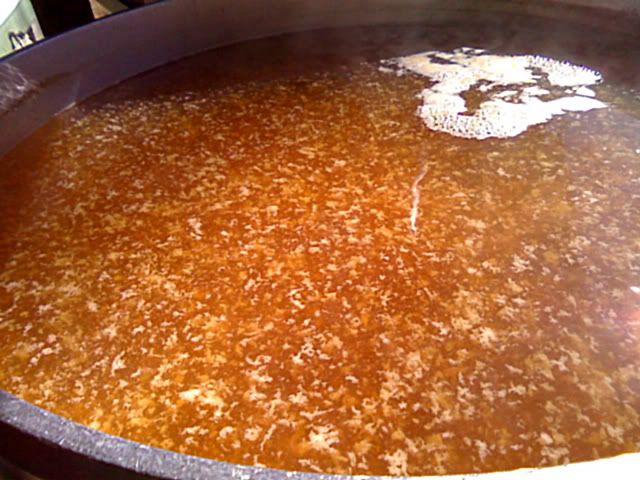I admit to embracing a workable oversimplification of water chemistry, and after a year of improved brewing I can report good results.I picked up the following information from another brew forum written by AJ DeLange:
"A Brewing Water Chemistry Primer
By Ajdelange
One of the first things a beginning brewer is told is that beer is typically 95% water and that, as a consequence of this, getting the water one brews with “correct” for the style is very important. He is also told that most beer styles evolved the way they did because of the nature of the water with which they were originally brewed. Those statements are true enough but the process of understanding what is “correct” and the process of going between the water one has and the “correct” water is, to many, one of the most daunting aspects of brewing.
Many beginning and advanced brewers assume that it is necessary when brewing, for example, a Munich Helles, to duplicate Munich water and there are many places where one can find ion profiles for Munich water and spreadsheets into which one can insert those profiles and details of one’s own water and be given advice on what minerals to add to duplicate Munich. There are multiple potential problems with this approach. First, published water reports are very often wrong. Second, it is not enough to know what Munich water is like, You must also know what the brewer did to make the beer with the existing water. In the case of Helles, for example, the water needs to be softened. Finally, the spreadsheets often calculate salt additions based on simplifications of the chemistry involved, consideration of things that are essentially irrelevant (beer color, chloride to sulfate ration) and reliance on models of things (e.g. effects of dark malt on mash pH) that really can’t be modeled very well. When all the approximations are good the result can be fine but when they aren’t the result can be salt addition recommendations that can have a detrimental effect on the beer,
In this note we are going to take a very simple approach to brewing water preparation. In tailoring water we seek 2 goals. The first, arguably more important than the second, is to be sure that the water properties are consistent with mash pH in a suitable range (5.1 – 5.5). The second is that, on the one hand, the mineral content not add or cause flavors which the drinker may not like and on the other that minerals which have a positive effect on the beer, be available in adequate quantity, The first goal cannot be achieved by the use of water treatment alone. Acid is usually required. This is traditionally supplied in German brewing by the use of lactic acid in the form of sauermalz (acidulated malt) or sauergut (wort fermented by lactic bacteria) while in British practice a blend of mineral acids is usually empoyed. Thus the recommendations that follow also specify acid additions.
The following recommendations apply to “soft” water. Here we will define soft as meaning RO or distilled water or any water whose lab report indicates alkalinity less than 35 (ppm as CaCO3 – all other numbers to follow mg/L), sulfate less than 20 (as sulfate – Ward Labs reports as sulfur so multiply the SO4-S number by 3 to get as sulfate), chloride less than 20, sodium less than 20, calcium less than 20 and magnesium less than 20. If your water has numbers higher than these, dilute it with RO or DI water. A 1:1 dilution reduces each ion concentration to 1/2, a 2:1 dilution to 1/3 and so on. If your water contains chloramines add 1 campden tablet per 20 gallons (before any dilution)
Baseline: Add 1 tsp of calcium chloride dihydrate (what your LHBS sells) to each 5 gallons of water treated. Add 2% sauermalz to the grist.
Deviate from the baseline as follows:
For soft water beers (i.e Pils, Helles). Use half the baseline amount of calcium chloride and increase the sauermalz to 3%
For beers that use roast malt (Stout, porter): Skip the sauermalz.
For British beers: Add 1 tsp gypsum as well as 1 tsp calcium chloride
For very minerally beers (Export, Burton ale): Double the calcium chloride and the gypsum.
These recommendations should get you a good beer if not the best beer. To get the best you should vary the amounts of the added salts noting carefully whether a change benefits or detriments your enjoyment of the beer. Additional sulfate will sharpen the perceived hops bitterness. Additional chloride will round, smooth and sweeten the beer. Add or decrease these in small amounts.
Those serious about getting the best possible results should buy a pH meter and check mash pH increasing or decreasing the amount of sauermalz to get pH around 5.3. Unfortunately the strips don’t seem to work very well."

